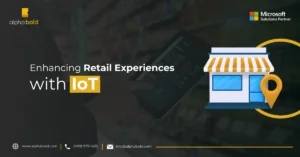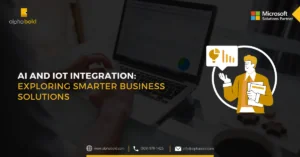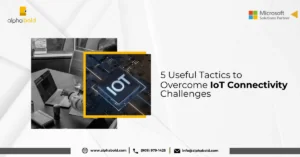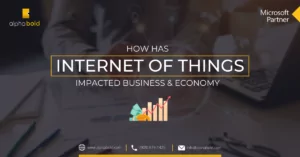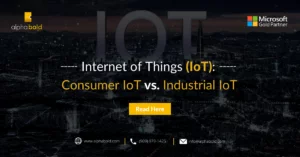Table of Contents
Introduction
As the world progresses and embraces advanced technologies, the Internet of Things (IoT) is emerging as a highly competitive field. A recent market research survey predicts that by 2025, there will be over 27 billion connected IoT devices globally. This staggering number indicates that IoT connections, such as connected cars, smart home devices, and industrial equipment, will outnumber non-IoT connections like smartphones, laptops, and computers. The rapid growth of IoT highlights its increasing importance in the modernization journey.
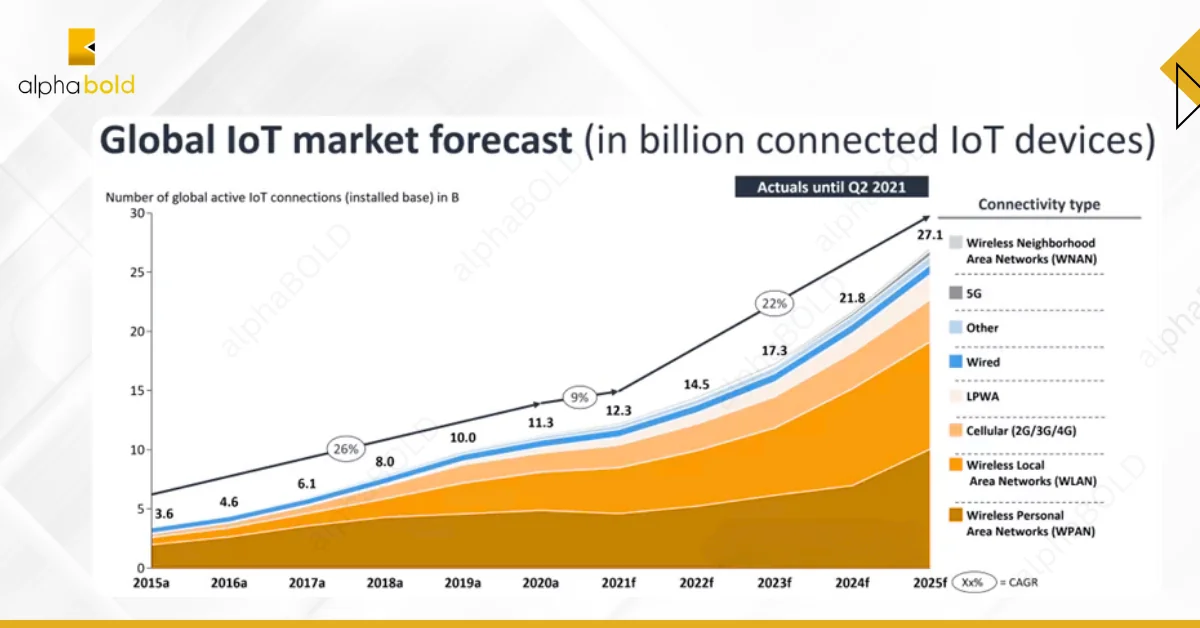
IoT has transformed how we interact with technology, enabling seamless connectivity and automation across various devices. To develop robust IoT solutions, choosing the proper framework is crucial. Open-source IoT frameworks offer flexibility, customization options, and a vibrant community of developers.
In this blog post, we will explore the top six open-source IoT frameworks and help you determine which one is best suited for your project. However, before we do, let’s explore why understanding IoT frameworks is important to organizations on both a strategic and competitive level.
Empowering C-Level Vision: Navigating IoT Frameworks for Strategic Excellence
As a C-level executive navigating the evolving technological landscape, staying at the forefront of innovation is paramount. The IoT revolution is not merely a trend but a strategic imperative. This blog delves into the top open-source IoT frameworks, providing valuable insights to inform your decision-making. Understanding these frameworks is akin to understanding the foundation of a connected future for your business. Choosing the right IoT framework can significantly impact operational efficiency, data-driven decision-making, and ultimately, your organization’s competitiveness. In this digital transformation era, being equipped with the knowledge to make informed choices regarding IoT frameworks is a strategic advantage that can set your organization on the path to technological excellence and market leadership.
Looking for IOT Consulting Services?
Get tailored IoT solutions to optimize operations, boost efficiency, and drive innovation. Our experienced consultants are ready to transform your IoT vision into reality.
Let's Talk to Our ExpertWhat is an Open-Source IoT Framework?
IoT devices interact with each other by generating and transmitting data to fulfill their respective tasks. Within this network of devices, it is crucial to have a central point that collects, processes, and transmits this data. This is where an IoT framework comes into play.
An open-source IoT framework creates an ecosystem that enables data gathering, storage, and transmission. An IoT framework ensures smooth communication among a network of IoT devices, facilitating seamless data exchange.

A typical open-source IoT framework can be divided into four major components: hardware devices, software applications, communication and cloud platforms, and cloud applications.
Understanding IoT Challenges: The Burden of Manual Processes
The adoption of IoT technology is often driven by the need to overcome inefficiencies caused by manual processes. Businesses relying on traditional workflows face multiple challenges, including inaccurate data, slow response times, and a lack of real-time insights. These limitations result in higher operational costs, frequent errors, and an overall decrease in productivity.
Without real-time visibility into critical operations, decision-making becomes reactive rather than proactive. Issues such as delays in troubleshooting, unreliable reporting, and excessive manual intervention create bottlenecks that hinder scalability. IoT solutions address these concerns by introducing automation, ensuring precise data collection, and streamlining workflows to improve efficiency.
Benefits Of Open-Source IoT Frameworks
Open-source IoT frameworks offer a range of advantages that make them a compelling choice for developing IoT solutions. Firstly, they provide cost-effectiveness by eliminating licensing fees associated with proprietary solutions. This cost savings can be redirected towards enhancing other aspects of the IoT project. Secondly, open-source frameworks offer flexibility and customization options, allowing developers to tailor the framework to specific project requirements. The availability of a vibrant community and collaborative development fosters innovation, updates, and continuous improvement, ensuring the framework remains up-to-date with the latest advancements.
Additionally, open-source frameworks often have a wealth of documentation, tutorials, and a broad user base, facilitating easier onboarding and troubleshooting. The transparency and open nature of the code in these frameworks promote security, as more eyes can review and identify potential vulnerabilities. Overall, leveraging open-source IoT frameworks accelerates development and encourages a collaborative and robust ecosystem in the IoT space.
Ready To Transform Your IoT Vision Into Reality?
AlphaBOLD's IoT specialists have a global footprint and deep industry knowledge. Schedule a consultation to explore secure, end-to-end solutions for your IoT venture. Your IoT success story starts here!
Request a ConsultationTop Open Source IoT Frameworks
Here are the top open-source IoT frameworks used:
Kaa:
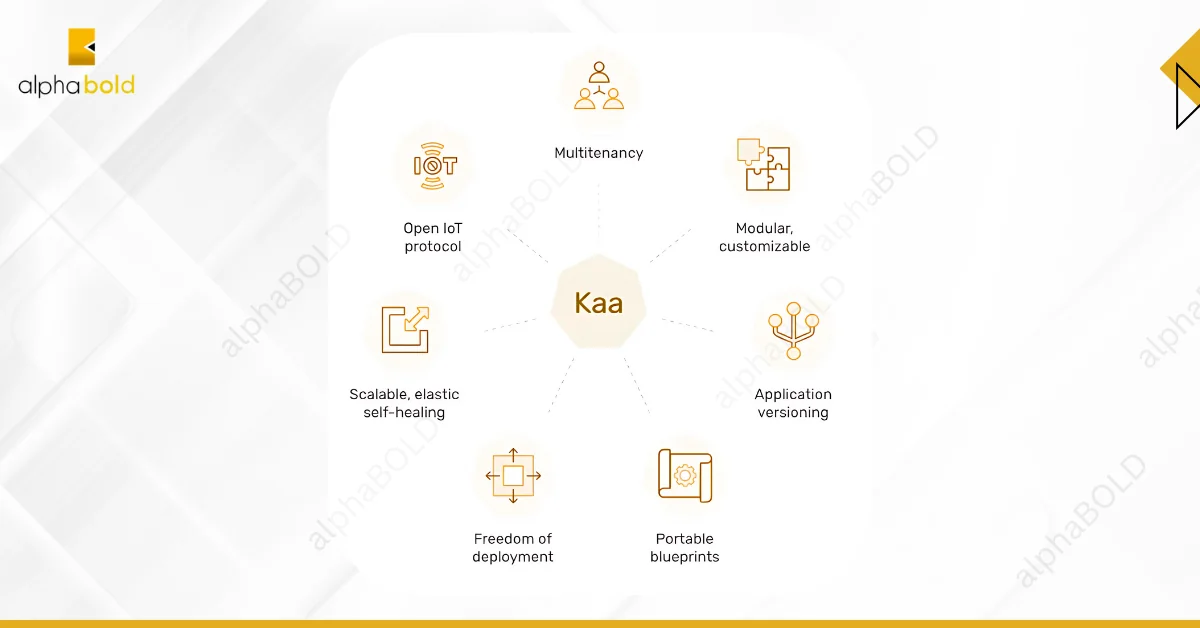
Kaa is an open-source IoT middleware platform that simplifies the development and management of connected applications. It offers comprehensive features such as device provisioning, data collection, analytics, and remote device management. Kaa supports multiple programming languages and provides SDKs for various hardware platforms. It’s modular architecture and extensive documentation make it easy to integrate and customize.
Features:
- Easy integration across devices
- Seamless data transfer
- Remote monitoring
- Unlimited device connections
- Cross-device interoperability
DeviceHive:
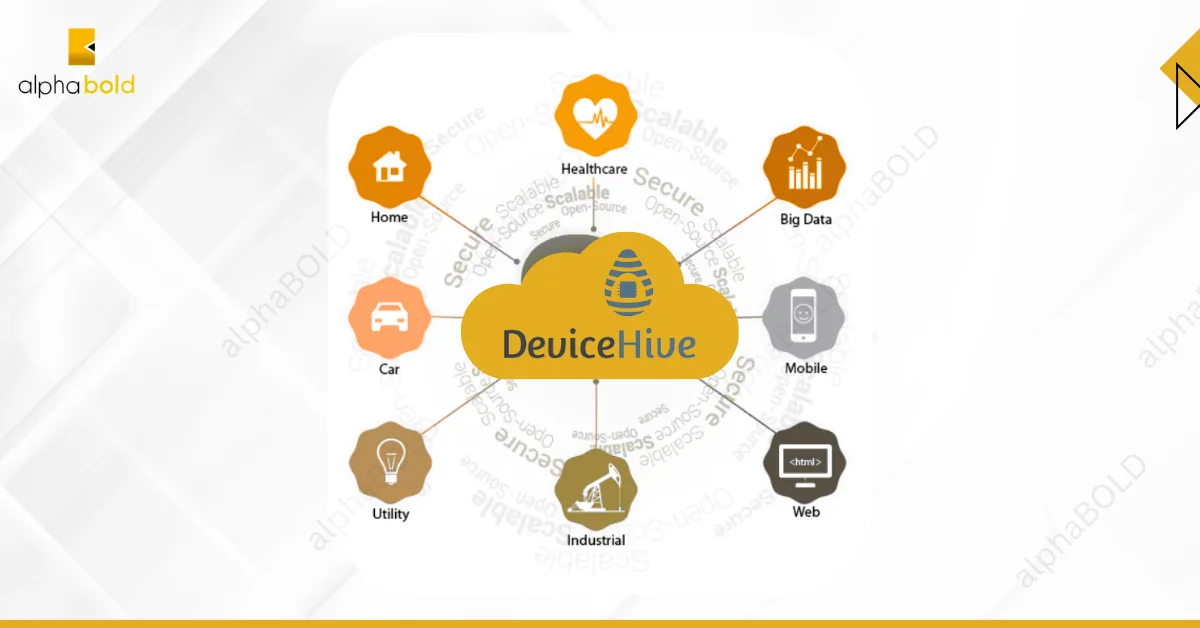
DeviceHive is an open-source IoT framework distributed under Apache 2.0 license and offers tools for efficient communication and management of smart devices. Its architecture comprises a communication layer, control software, and multi-platform libraries. The framework focuses on providing services for diverse applications such as smart energy, home automation, remote sensing, and remote control. With scalability as a core feature, DeviceHive combines hardware and cloud services, offering APIs in multiple protocols. This allows users to configure, control, and analyze data behavior quickly. The framework’s applications range from data transition, validation, and collection to advanced technologies like Machine Learning and Artificial Intelligence. It supports a variety of libraries, including Python, Node.js, Java, and ESP8266 Firmware, enhancing its flexibility and compatibility.
Features:
- Supports Python, Node.js, Java, Android, iOS, and other client libraries
- Connects to devices with REST API, WebSocket, or MQTT protocols
- Extensive support for big data analytics
- Supports Docker and Kubernetes deployment options
Zetta:
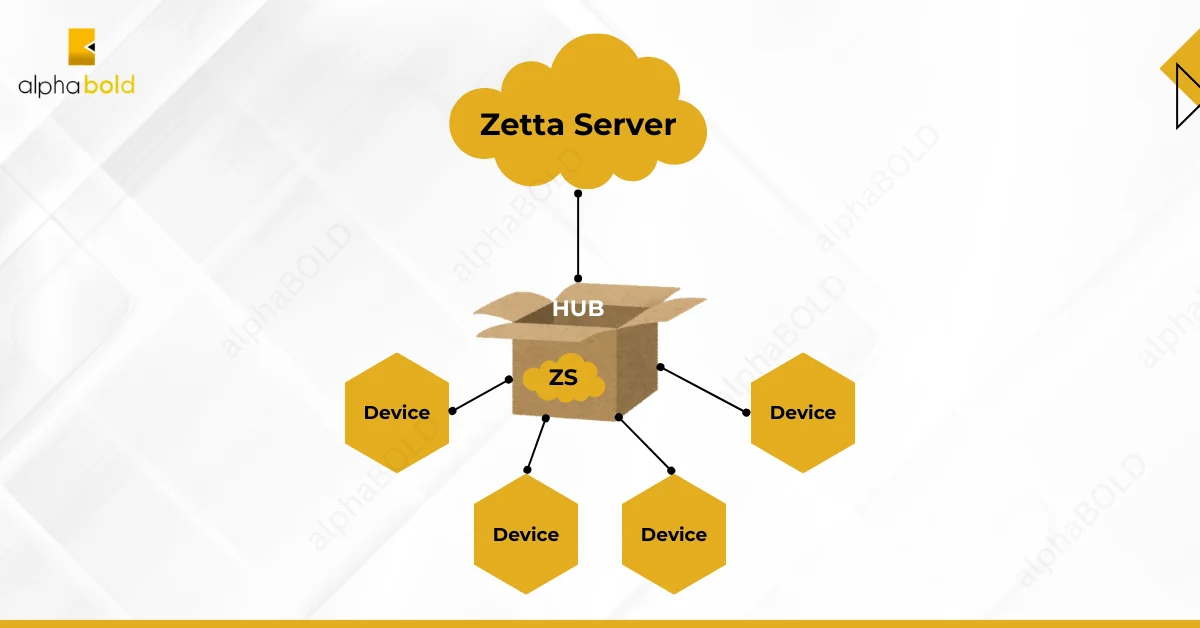
Zetta emerged as one of the pioneering open-source IoT frameworks, enabling continuous streaming of data loads. It is constructed on Node.js REST and utilizes a flow-based reactive programming approach. Zetta excels in data aggregation and device management. Furthermore, it seamlessly integrates hardware boards like Raspberry Pi, Arduino, Spark Core, and PCs with cloud platforms such as Heroku. Each device is assigned a REST API by the Zetta server, enabling it to function as an API both locally and in the cloud.
Features:
- Integration with data visualization tools
- Built on NodeJS
- A secure connection between network devices
- Simple interface and necessary programming
- Can easily integrate with smartphone, device, and cloud apps
ThingSpeak:
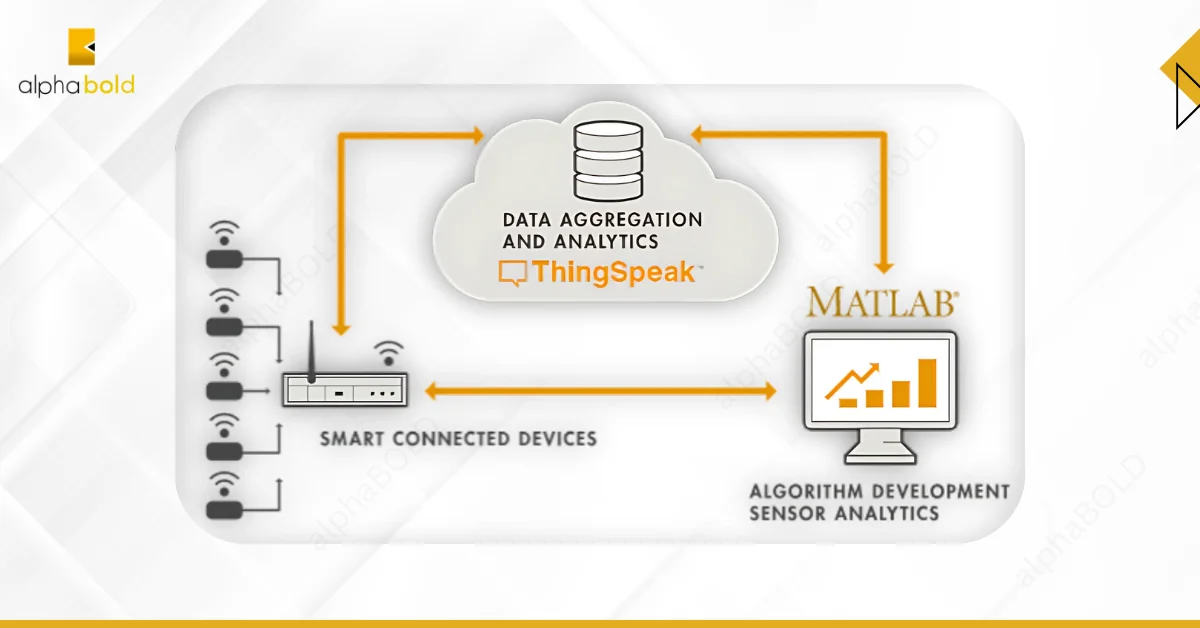
ThingSpeak, a recent addition to the IoT framework landscape, offers an innovative feature that sets it apart. It enables data analysis and visualization using MATLAB, eliminating the need to purchase a separate license for the software. Additionally, ThingSpeak seamlessly integrates with MathWorks, facilitating efficient data transmission across multiple channels. This framework is compatible with popular applications like Arduino, particle photon, and electron, making it versatile and adaptable. With ThingSpeak, users can easily store data in private channels and share it through public channels. Despite being a new platform, ThingSpeak boasts a strong community support network, ensuring users can access valuable resources and assistance.
Features:
- Real-time data analytics & visualization capabilities
- Seamless data sharing from private to public channels
- Works with MATLAB for data analysis and visualization
- Extensive tools support
Mainflux:
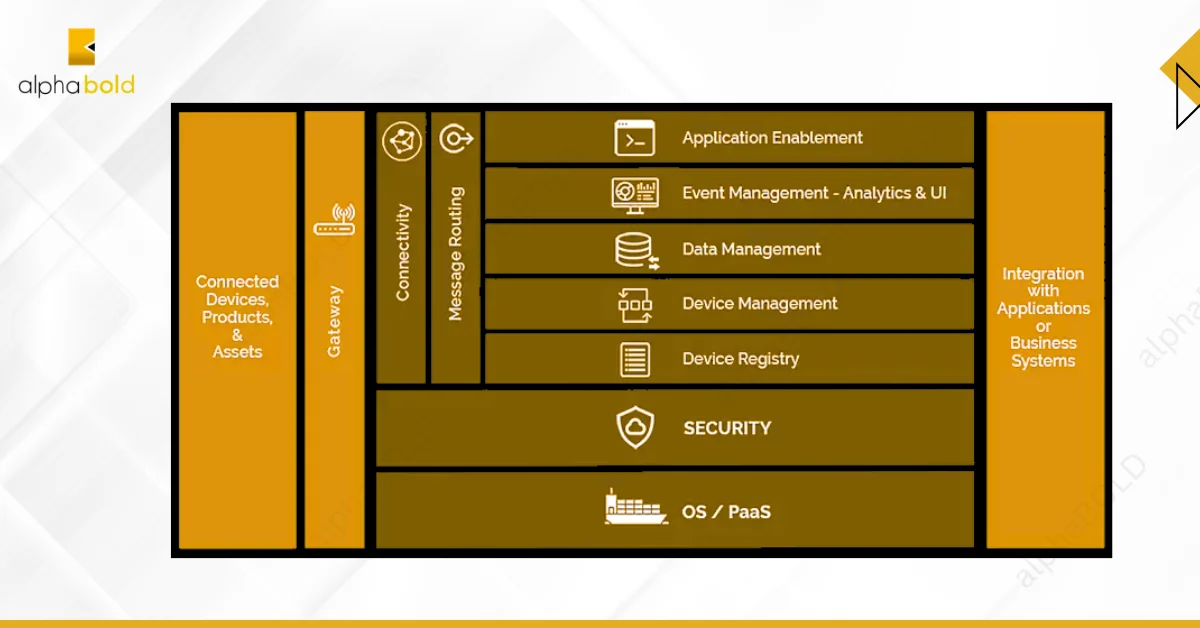
Mainflux facilitates the IoT app development and enables control over various smart connected products. The Mainflux IoT platform offers numerous advantages including device management, encompassing data management and aggregation. The platform ensures secure and stable connectivity across multiple devices. With a user-friendly interface, Mainflux promotes easy comprehension, particularly for beginners.
Moreover, it operates under the Apache 2.0 license, ensuring clear communication across devices and the platform. Users receive comprehensive support and timely bug fixes. The platform provides fully secure connections through authentication and authorization servers, utilizing customizable API keys. With fast and robust execution, Mainflux delivers exceptional performance. It also boasts scalability and fault tolerance, enhancing its overall performance.
Features:
- Connectivity via HTTP, MQTT, CoAP protocols, and WebSocket
- Provisioning and device management
- Container-based deployment by Docker
- Customizable API keys and scoped JWT for enhanced data security
- Low OPEX (operating expense) benefits
Thinger.io:
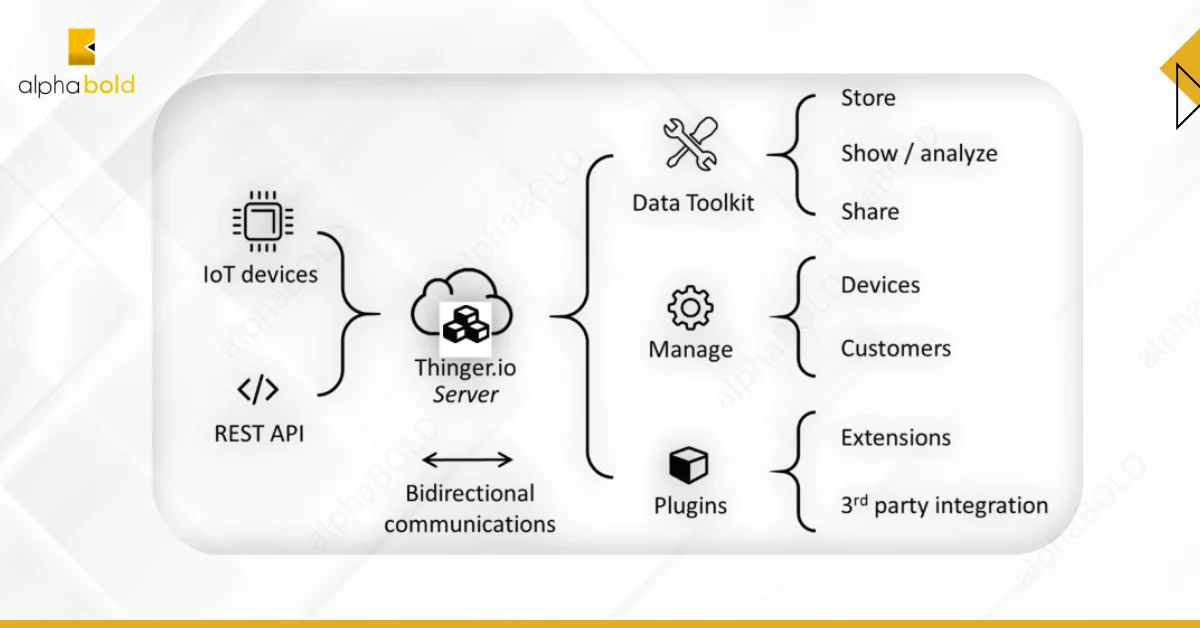
Thinger.io is an open-source IoT framework with simplified device connectivity and control. It supports integrating various device types, regardless of processor or manufacturer. The unique communication paradigm ensures data transfer only when necessary, reducing computation load and bandwidth usage. It enables bidirectional communication with Arduino, Raspberry Pi, and MQTT devices. Thinger.io offers multiple widgets for enhanced data display on the platform. Despite its limitations, it provides an easy-to-use interface for beginners. With Thinger.io, sending and receiving data becomes effortless, making it a versatile IoT framework.
Features:
- Smooth multi-hardware integration
- Support of Arduino IDE, Linux, Sigfox, and ARM Mbed boards
- Streaming live data to WebSocket
- Real-time dashboards for device data visualization in the cloud
- iOS and Android mobile apps support
- IFTTT event-triggered settings for multiple IoT devices
Choosing the Best IoT Framework:
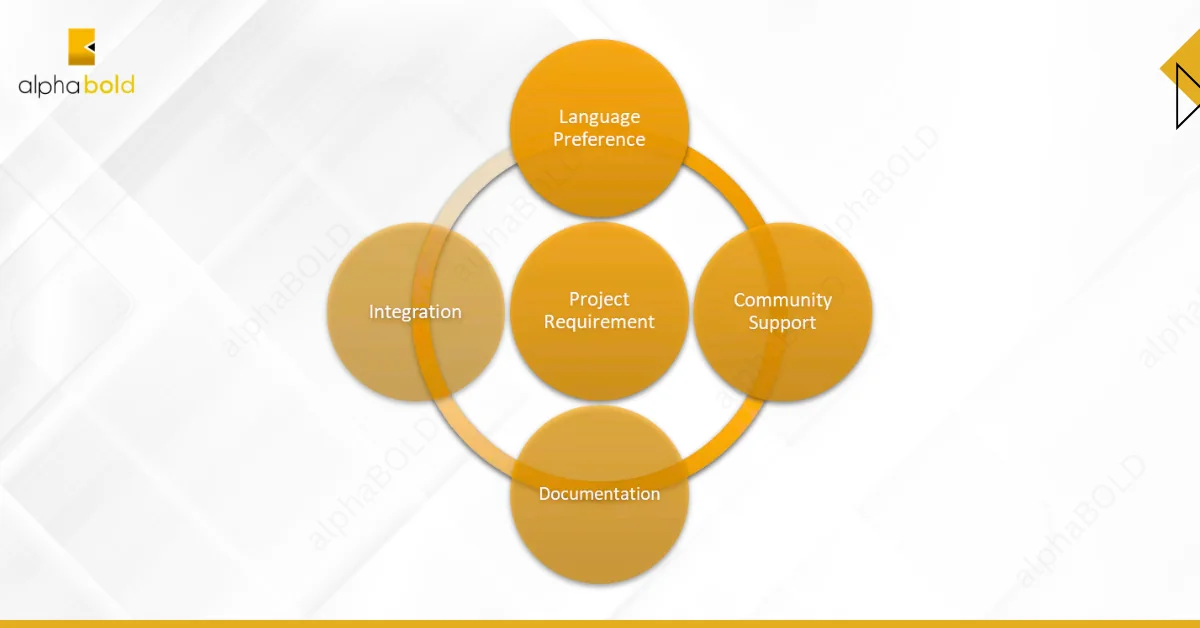
To determine the best framework for your IoT project, consider the following factors:
- Project Requirements: Identify the specific needs of your project, including scalability, device compatibility, and data management requirements.
- Language Preference: Some frameworks can support multiple programming languages, while others focus on specific languages. Choose a framework that aligns with your programming skills and preferences.
- Community Support: Evaluate the size and activity level of the community around each framework. A strong community ensures continuous development, updates, and support.
- Documentation: Check the availability of comprehensive documentation, tutorials, and examples for each framework. Good documentation can significantly ease the learning curve.
- Integrations: Consider the available plugins, extensions, and integrations with third-party services or devices. A vibrant ecosystem expands the capabilities of the framework.
Explore more about: Internet Of Things (IoT): Consumer IoT Vs. Industrial IoT
Real-World IoT Use Cases by AlphaBOLD
IoT applications span various industries, solving critical business challenges with automation and real-time monitoring. AlphaBOLD has developed and deployed IoT solutions across multiple sectors. Here are some key use cases:
1. Location Tracking with GPS Sensors: GPS-based tracking enables businesses to monitor vehicle locations and driver movements in real time. This helps optimize logistics, improve customer service by providing accurate ETAs, and streamline invoicing and payroll through location-based data.
2. Barcode Scanners for Inventory Management: Barcode scanning automates stock tracking and integrates seamlessly with cloud infrastructure. Businesses can monitor inventory updates in real time, reducing errors and enhancing supply chain visibility.
3. RFID Readers for Asset Tracking: RFID readers provide seamless tracking of assets without requiring a direct line of sight. They are used to automate warehouse management, confirm deliveries, and improve security by ensuring real-time location monitoring of critical equipment.
4. Gas Pressure Sensors for Safety and Optimization: IoT-enabled gas pressure sensors play a crucial role in industries such as healthcare and automotive. They help monitor oxygen levels in medical cylinders and optimize engine performance by regulating pressure levels in vehicles.
These use cases highlight the versatility of IoT technology in automating operations, improving efficiency, and enhancing decision-making across industries.
Why Partner with an IoT Solutions Provider?
Building an IoT ecosystem from scratch is a complex task that requires expertise in hardware integration, cloud infrastructure, and data analytics. Partnering with an experienced IoT solutions provider like AlphaBOLD can significantly reduce time-to-market and implementation risks.
- Expertise & Experience: A dedicated IoT partner ensures seamless integration between devices, platforms, and cloud solutions, eliminating compatibility concerns.
- Faster Deployment: Instead of spending years developing an in-house solution, businesses can leverage existing IoT frameworks for quicker implementation.
- Scalability & Future-Proofing: IoT solutions should grow with business needs, adapting to evolving technological advancements.
- Cost-Effectiveness: Establishing an internal IoT team requires heavy investment. Outsourcing to an experienced provider reduces operational costs while delivering cutting-edge technology.
By collaborating with a trusted IoT solutions provider, businesses can focus on core operations while leveraging industry expertise to drive digital transformation.
A Strategic Approach to IoT Implementation
To fully capitalize on IoT solutions, businesses must adopt a structured implementation strategy. AlphaBOLD follows a comprehensive approach to ensure a seamless IoT deployment:
- Analysis: Identifying business needs, challenges, and potential IoT applications.
- Solution Architecture: Selecting the right hardware, software, and connectivity protocols tailored to specific use cases.
- Strategy Development: Defining data collection methods and analyzing how IoT-generated insights will drive business value.
- Development & Testing: Creating a robust IoT framework and identifying potential issues before deployment.
- Deployment & Integration: Implementing and configuring IoT systems for real-world operations.
- Data Management & Analytics: Leveraging AI-driven analytics to extract valuable insights and enable predictive decision-making.
By taking a strategic approach, businesses can ensure their IoT investments deliver long-term benefits, improving efficiency, reducing costs, and driving innovation.
Maximizing Leadership Impact: Why Understanding IoT Frameworks Matters for C-Level Executives
When it comes to technology, being well-versed in IoT frameworks is essential for C-level executives aiming to drive organizational success. These frameworks are the backbone of IoT solutions, providing a roadmap for integrating and leveraging interconnected devices to optimize operations and enhance decision-making. By understanding these frameworks, you equip yourself with the knowledge needed to align technological investments with strategic business objectives.
Moreover, a thorough grasp of IoT frameworks facilitates seamless communication with technical teams. You can effectively articulate requirements, understand potential challenges, and ensure that the chosen framework aligns with the organization’s goals. This collaborative approach enhances project implementation and drives favorable outcomes.
Furthermore, a comprehensive understanding of IoT frameworks opens doors to new opportunities in a world driven by innovation. It allows you to explore innovative avenues for product development, service enhancements, or operational efficiencies. By staying ahead of the curve, you position your organization to adapt to emerging technologies swiftly, gaining a competitive edge and enabling growth in the market.
Further reading: How has Internet of Things Impacted Business & Economy
Conclusion
In conclusion, an IoT framework is pivotal in facilitating seamless data collection, storage, and distribution across a network of interconnected devices. The frameworks we reviewed extensively cater to these crucial functionalities, presenting excellent choices for your IoT project. However, the difference lies in the intricate details, encompassing diverse features, supported technologies, and various use cases.
Selecting the ideal open-source IoT framework for your project hinges on understanding the project’s scope and specific requirements. The options outlined above are commendable choices, each with unique strengths and features. It’s essential to analyze factors such as project requirements, programming language preference, community support, documentation, and ecosystem to make an informed decision. It’s important to emphasize that there’s no universally “best” framework for every scenario. Thus, evaluating and comparing based on your project’s distinctive characteristics is paramount.
Embrace the potential of these IoT frameworks to tailor your project for success, considering your project’s unique needs and laying a strong foundation for a connected and innovative future.
Explore Recent Blog Posts



